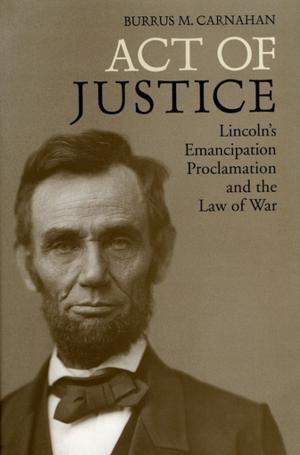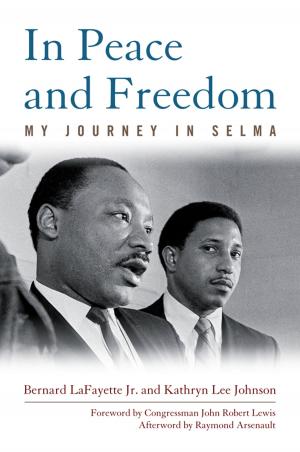| Author: | Anthony James Joes | ISBN: | 9780813137599 |
| Publisher: | The University Press of Kentucky | Publication: | April 20, 2007 |
| Imprint: | The University Press of Kentucky | Language: | English |
| Author: | Anthony James Joes |
| ISBN: | 9780813137599 |
| Publisher: | The University Press of Kentucky |
| Publication: | April 20, 2007 |
| Imprint: | The University Press of Kentucky |
| Language: | English |
Guerrilla insurgencies continue to rage across the globe, fueled by ethnic and religious conflict and the easy availability of weapons. At the same time, urban population centers in both industrialized and developing nations attract ever-increasing numbers of people, outstripping rural growth rates worldwide. As a consequence of this population shift from the countryside to the cities, guerrilla conflict in urban areas, similar to the violent response to U.S. occupation in Iraq, will become more frequent. Urban Guerrilla Warfare traces the diverse origins of urban conflicts and identifies similarities and differences in the methods of counterinsurgent forces. In this wide-ranging and richly detailed comparative analysis, Anthony James Joes examines eight key examples of urban guerrilla conflict spanning half a century and four continents: Warsaw in 1944, Budapest in 1956, Algiers in 1957, Montevideo and São Paulo in the 1960s, Saigon in 1968, Northern Ireland from 1970 to 1998, and Grozny from 1994 to 1996. Joes demonstrates that urban insurgents violate certain fundamental principles of guerrilla warfare as set forth by renowned military strategists such as Carl von Clausewitz and Mao Tse-tung. Urban guerrillas operate in finite areas, leaving themselves vulnerable to encirclement and ultimate defeat. They also tend to abandon the goal of establishing a secure base or a cross-border sanctuary, making precarious combat even riskier. Typically, urban guerrillas do not solely target soldiers and police; they often attack civilians in an effort to frighten and disorient the local population and discredit the regime. Thus urban guerrilla warfare becomes difficult to distinguish from simple terrorism. Joes argues persuasively against committing U.S. troops in urban counterinsurgencies, but also offers cogent recommendations for the successful conduct of such operations where they must be undertaken.
Guerrilla insurgencies continue to rage across the globe, fueled by ethnic and religious conflict and the easy availability of weapons. At the same time, urban population centers in both industrialized and developing nations attract ever-increasing numbers of people, outstripping rural growth rates worldwide. As a consequence of this population shift from the countryside to the cities, guerrilla conflict in urban areas, similar to the violent response to U.S. occupation in Iraq, will become more frequent. Urban Guerrilla Warfare traces the diverse origins of urban conflicts and identifies similarities and differences in the methods of counterinsurgent forces. In this wide-ranging and richly detailed comparative analysis, Anthony James Joes examines eight key examples of urban guerrilla conflict spanning half a century and four continents: Warsaw in 1944, Budapest in 1956, Algiers in 1957, Montevideo and São Paulo in the 1960s, Saigon in 1968, Northern Ireland from 1970 to 1998, and Grozny from 1994 to 1996. Joes demonstrates that urban insurgents violate certain fundamental principles of guerrilla warfare as set forth by renowned military strategists such as Carl von Clausewitz and Mao Tse-tung. Urban guerrillas operate in finite areas, leaving themselves vulnerable to encirclement and ultimate defeat. They also tend to abandon the goal of establishing a secure base or a cross-border sanctuary, making precarious combat even riskier. Typically, urban guerrillas do not solely target soldiers and police; they often attack civilians in an effort to frighten and disorient the local population and discredit the regime. Thus urban guerrilla warfare becomes difficult to distinguish from simple terrorism. Joes argues persuasively against committing U.S. troops in urban counterinsurgencies, but also offers cogent recommendations for the successful conduct of such operations where they must be undertaken.















